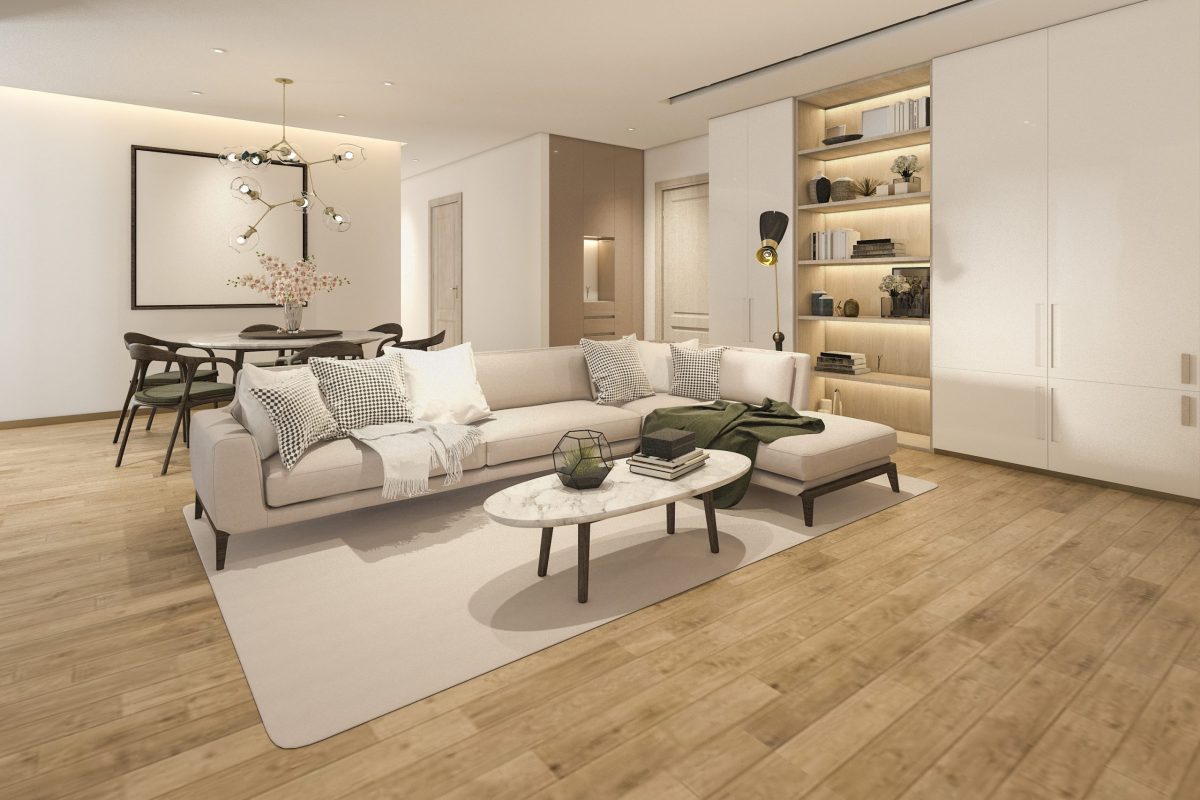
You can choose the flooring from laminate and vinyl surfaces. Both solutions are very good. However, before you decide on a particular type of flooring, it is worth knowing the properties of both materials.
Laminate is made of many layers, including the HDF body – it’s folded wood fibers that have been recycled.
Vinyl, on the other hand, is made of multiple layers that include PVC and fiberglass components. Panels made from this material are free of harmful phthalates.
The two types of panels also differ in appearance. Laminate floors are more commonly used in living rooms and dining rooms because they have a soft texture on the surface and perfectly mimic natural materials such as stone or wood. They stand out for their elegant appearance
Vinyl panels on the other hand can also imitate natural materials. Vinyl panels are also available that will perfectly replace us:
You can also create beautiful 3D patterns with them.
An additional advantage of vinyl panels is that they are very warm and soft. They can be suitable for the living room or bedroom, among others. Thanks to their many layers, they mask noises perfectly. Their acoustic properties are surprisingly effective, so you don’t need additional soundproofing panels underneath.
Laminated floors are slightly louder because they have a harder surface. They are characterized by their light weight, so they create the impression of empty space under your feet. This type of floor will require additional soundproofing.
>> See also: What is the difference between primer and undercoat?
Laminate flooring is very cheap, and above all it has many interesting patterns to choose from. You can choose practically any look of grain, as well as texture, which will beautifully complement our room. The structure is extremely durable and less susceptible to abrasion. It consists of specially laminated paper, which is additionally embossed. Resin is also poured on the surface, which gives color, shine, but also protection against the development of microorganisms. The underside of laminate panels, in turn, is finished with melamine, which protects against the influence of moisture on the floor structure. The core, in turn, is MDF or HDF chipboard.
A big disadvantage of such is their poor soundproofing. When calculating the cost of replacing laminate flooring, you also need to take into account the price of additional soundproofing panels.
Vinyl laminate flooring has many advantages. Their structure has a proven insensitivity to moisture. Vinyl flooring can be used in kitchens and bathrooms without any worries. These panels are very often used in SPA salons or around swimming pools. Vinyl flooring is a good solution for people with allergies – it does not electrify, and as a result, does not attract dust.
The downside of vinyl panels is that the surface to be laid must be perfectly smooth before they are laid. Vinyl panels are very thin – they can be as little as 2 mm, so it is important to consider the expansion gap when gluing them. This is quite beneficial, especially for large areas up to 400 m².
If you want to use underfloor heating, vinyl panels are not a good choice, because there is no thermal conductivity in their case.
Laminate and vinyl floors are distinguished by their very good impact resistance, but also scratchresistance. Laminate floors have a slight advantage as they are harder than vinyl panels. They can be used, for example, in a hallway.
When it comes to installation, both types of flooring are very easy to install. The panels use a click system, which makes laying the floor extremely easy and you can do the job yourself.
When choosing, it is also worth considering the care requirements of the materials. With panels, whether laminate or vinyl, you only need to vacuum and use artificial panel cleaners. Vinyl may be slightly easier to clean, especially if you choose a substrate without a clearly defined structure.
Cost is extremely important when finishing a room. Here the price of both materials is very similar. You can find laminate, but also vinyl at a price of 20-30 PLN per m2.